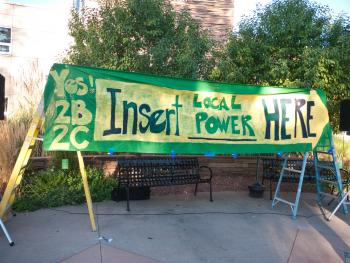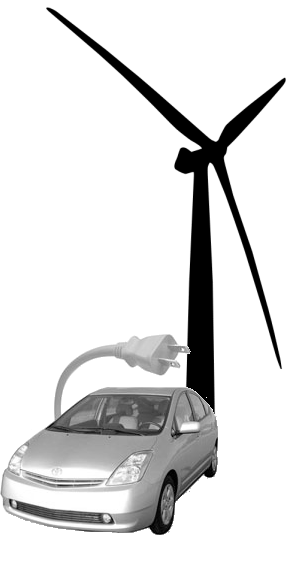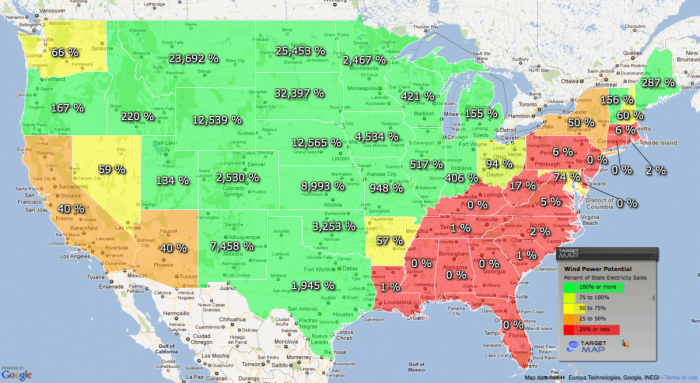 In just three weeks, citizens of Boulder, CO, will vote on whether to begin a big, formal process to unplug from Xcel Energy’s system and plug into local energy self-reliance. The vote to form a municipal electric utility could set a precedent for communities across the United States to keep millions of dollars local instead of sending them to remote electric utilities each year.
In just three weeks, citizens of Boulder, CO, will vote on whether to begin a big, formal process to unplug from Xcel Energy’s system and plug into local energy self-reliance. The vote to form a municipal electric utility could set a precedent for communities across the United States to keep millions of dollars local instead of sending them to remote electric utilities each year.
The vote on ballot measures 2B and 2C is the culmination of a multi-year struggle by the city of Boulder meet the Kyoto greenhouse gas emission targets by getting less coal power and more renewable energy from its investor-owned utility.
At every turn, the utility has stalled local efforts.
When the city first considered municipalization, Xcel offered to finance and build a local smart grid but has since been allowed by the state’s public utility commission to charge Coloradans for significant cost overruns. When the city asked Xcel to bring in more clean energy, the utility offered to build a new wind plant and import its power from across the state only if Boulder citizens agreed to pay more when the wind blew and pay when it didn’t, too. Despite the ill nature of the offer, the city offered to put it on the ballot along with a vote to municipalize, but Xcel refused, demanding that the city also offer citizens a separate “status quo” measure.
In contrast, a Boulder-owned utility offers enormous clean energy and economic opportunity without having to beg a big, private company. The city could increase renewable energy production by 40% from multiple, local sources without increasing rates, according to a citizen-led peer reviewed study. The economic value of local energy ownership would multiply within the city’s economy to as much as $350 million a year, according to research by the National Renewable Energy Laboratory.
But with $100 million a year in revenues from Boulder ratepayers on the line, Xcel’s fight is getting as dirty as its nearby Cherokee coal plant. Xcel has dumped over $450,000 into a vote no campaign, 10 times the expenditures of the grassroots groups supporting the municipalization ballot measure. The utility’s front group has flogged a web advertisement that falsely asserts that electricity will be unreliable if the city has control, even though 1 in 7 Americans gets their (reliable) electricity from municipal utilities. Xcel has posted job notices on light poles offering residents up to $12 an hour to work as “grassroots” utility flaks. And in a purely spiteful move, Xcel also succeeded in banning Boulder resident Leslie Glustrom from participating at the Public Utilities Commission, where she had asked tough questions about Xcel’s new coal power plants and proposed rate increases.
Locals are fighting back. Citizens for Boulder’s Clean Energy Future has organized a crack team of technical and financial experts to model the impact of the municipal utility and is pounding the pavement to counter Xcel’s campaign of misinformation. The coalition has received endorsements from dozens of local elected officials and businesses, two local newspapers, and nearly one thousand residents. Even President Obama’s former green jobs advisor Van Jones starred in a video endorsing Boulder’s effort for local energy self-reliance.
The battle for local control isn’t just in Boulder. Recently a number of Massachusetts towns have pursued municipal electric plants when the private electric company took too long to restore power after Hurricane Irene. And in nearby Longmont, CO, citizens may vote to use their existing fiber optic network to provide better internet broadband services (if citizens can overcome the $250,000 being spent by private providers CenturyLink and Comcast).
The stakes are high. Buying electricity from Xcel sends $100 million out of the Boulder economy each year, and helps perpetuate a centrally-controlled grid reliant on coal-fired power (and often hostile to wind power). Ratepayers across America may not have the chance to weigh in on Boulder’s vote this November, but they should watch intently (and donate if they like), because Boulder citizens may be firing the first “shot heard round the world” for local control of their clean energy future.
… Read More






 The U.S. Northwest could get an additional 12 percent of its electricity from local wind power if 1 in 8 of the region’s cars used batteries.
The U.S. Northwest could get an additional 12 percent of its electricity from local wind power if 1 in 8 of the region’s cars used batteries. 
